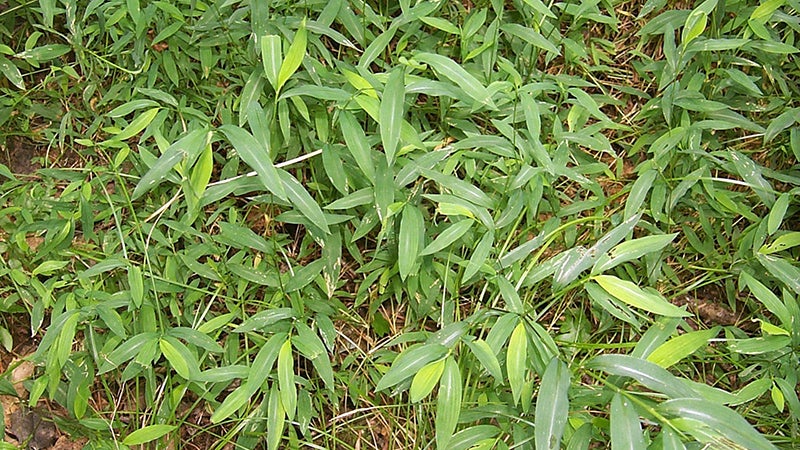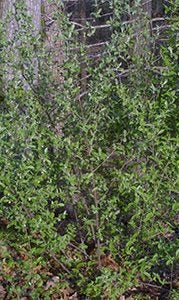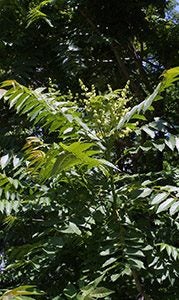Stop invasive plants in their tracks
Published 3:21 pm Tuesday, May 8, 2018

- Pull up Japanese stiltgrass (Microstegium vimineum.) wherever you find this aggressive invasive taking hold.
|
Getting your Trinity Audio player ready...
|
Kristi Hendricks
Thickets of invasive plant species lurk in the landscapes and wilderness of Virginia. I dare say we’ll all have at least one surfacing this spring hoping to seize the territory. Invasive plants cause economic and ecological harm, posing a threat to Virginia’s forests, grasslands, wetlands and waterways.
Let’s take a look at three such villains noted with a high threat level for the coastal, piedmont and mountain regions. Gardeners need to be informed about invasive exotics and aware of best management practices (VCE publications 420-320, 420-321.)

With its aggressive growth habit, the autumnberry (Elaeagnus umbellata) forms dense shady areas that prevent growth of nearby plants requiring sunnier conditions.
The paradise tree (Ailanthus altissima) is commonly known as the tree of heaven. Its native range is northern China, but was introduced in the late 1700s as a fast-growing ornamental with the emergence of pleasure gardening and Colonial plant exchanges. This invasive releases phytotoxic substances that suppress the growth of other plants. With its rapid growth, prolific seed production and aggressive suckering habit, it soon forms colonies.
- Another plant to quickly suppress is Japanese stiltgrass (Microstegium vimineum.) This annual, aka packing grass, was used as material for securing imports in the early 1900s. Pull it up wherever you find this aggressive invasive taking hold. In large growth areas, control by frequent mowing before this plant sets seed.
- Autumn olive (Elaeagnus umbellata) was first imported from Asia in the 1830s as mine reclamation plants to control erosion on disturbed hillsides. A mature plant can produce a fruit crop containing up to 200,000 seeds. With its aggressive growth habit, the autumnberry forms dense shady areas that prevent growth of nearby plants requiring sunnier conditions.

The tree of heaven (Ailanthus altissima) releases phytotoxic substances that suppress the growth of other plants.
The Isle of Wight Master Gardener Helpline stands ready to assist with home gardener questions about invasives. This horticulture hotline is in operation on Wednesdays, 10 a.m.-noon, through September. Reach a MG volunteer by calling 356-1979. Leave a message if other timing fits better into your gardening schedule. Your call will be returned as soon as possible.
VCE sponsors this helpline to educate about horticultural resources and offer informed suggestions for the caller’s consideration. All volunteers are ready to share information based on training and experience. If you prefer to drop by the Extension Public Services Center with that “mystery” plant at 17100 Monument Circle, Suite B (Wednesdays, 10 a.m. to noon), please call ahead to 365-6261.
Also, check out the Extension webpage at pubs.ext.vt.edu/ for online references and useful publications. Note that commercial horticulturalists are encouraged to contact the IoW Extension Agent directly with questions or to report problems.
Stop invasives in their tracks. Helpful service is just a call or office visit away. Watch for plant clinics offered regularly this growing season. Events are open to all who care about the landscape and the plants we cultivate.
KRISTI HENDRICKS is a member of the Western Tidewater Master Gardeners. Contact her at GardenontheJames@yahoo.com.

